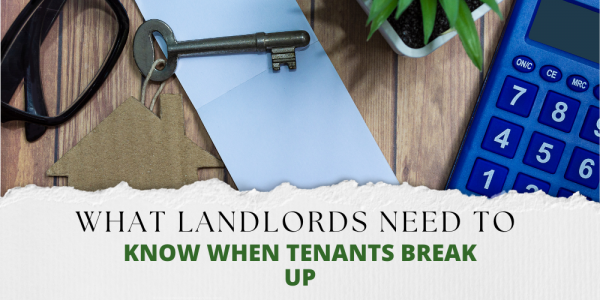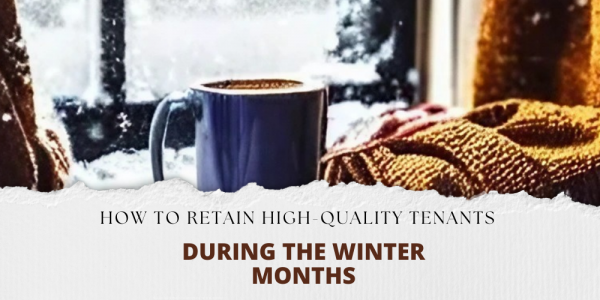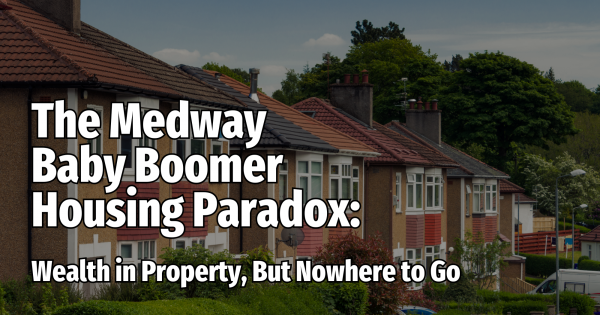CLICK HERE FOR YOUR FREE MEDWAY PROPERTY NEWSLETTER
The number of properties available to rent in Strood has dropped from 112 to 46 since February 2020.
The average rent a tenant has had to pay in Strood has risen from £888 to £1,194 since February 2020.
Many Strood landlords have cashed in on the post-lockdown property boom of the last two years and sold their properties to owner-occupiers - not fellow landlords.
The supply of Strood rental property isn't near what is needed, which is of benefit to Strood landlords rather than Strood renters.
The Strood rental property shortage is currently very evident. In this article, I will investigate why there is such a significant lack of homes available for rent across Strood and what it means for buy-to-let investors.
Anybody who enjoys surfing the property portals (Rightmove, Zoopla and On the Market) will have observed an emerging trend that the number of properties available to rent in Strood has dropped considerably in the last couple of years.
This reduction has been seen all around the UK as well. For example, on 1st November 2020, there were 372,931 properties to rent on portals. By the 1st November 2021, that had dropped to 275,650; by the 1st November 2022, that had fallen to 171,224.
That doesn't mean the number of privately rented homes in the country has dropped by over half. Fewer properties are coming onto the market to rent. I will explain why in this article.
For tenants, especially over the last 12 months, it has become progressively more challenging to find a Strood rental home, thus making the rent they must pay go up. This state of affairs in the property market isn’t showing an indication of getting any easier either, making for a hard time for Strood renters.
So, what is the reason behind the Strood rental property shortage, and what does this mean for existing Strood landlords or those potential investors considering buying a Strood buy-to-let property soon?
Several different components are making the perfect storm in the UK property market.
Firstly, the number of households in the UK.
The UK has not been building enough homes for the last 20 years. I appreciate that parts of Strood seem like one huge building site, yet as a country, we are woefully undersupplied with property to live in. This has meant house prices continue to rise due to demand.
The government have known about this issue for decades. The Barker Review of Housing Supply published in 2004 stated that the UK had experienced a long-term upward trend of 2.4% in real house prices since the mid-1970s because of a lack of house building. The report stated that 240,000 houses needed to be built each year to keep up with demand.
The average number of houses built since the mid-1970s has been around
165,000 per year, meaning the UK is short of 3,375,000 houses
(i.e. 45 years multiplied by 75,000 missing homes per year).
Several years ago, the government set a target to build 300,000 new homes each year to address this issue.
However, in 2019/20, the actual number of homes delivered stood at just 243,770. In 2020/21, the number of properties built dropped to only 216,000 new homes. In a nutshell, there are fewer available homes to buy, meaning fewer available homes to rent.
Secondly, Strood tenants are staying in their rental homes longer.
A Strood first-time buyer's average house deposit is £60,953
(the UK average deposit is £53,935).
The average rent of a Strood property in November 2022 is £1,194 per calendar month (up from £888 per calendar month in February 2020) – quite a rise!
These numbers translate into Strood renters not being able to pay the rent and be able to save for a deposit, or if they are saving, it is taking a lot longer to save for a deposit due to the cost-of-living crisis and higher rent costs.
Also, many Strood tenants have decided to stay in their existing rental homes because of the rent rises. Many landlords are less inclined to raise the rent on an existing property when they have a decent tenant who keeps the property in good condition and pays rent on time. Anecdotal evidence also suggests that rent arrears in those properties are dropping as tenants know if they don’t pay the rent, the chances are they will have trouble finding another property, and if they do, they will have to pay a lot for their next rental home.
For Strood landlords, this is all positive news - tenants are staying for longer in their Strood rental properties, arrears are lower, and void periods are less likely. When it comes to the market there is less competition (because of the decrease in the availability of Strood rental properties) so this makes the investment an even better bet.
Thirdly, landlords are selling up on the back of recently increased house prices.
It would be difficult for Strood buy-to-let landlords to ignore the rising property prices in recent years.
The average property value in Strood in the summer of 2022
was 12.8% higher than in the summer of 2021.
For some Strood buy-to-let landlords, especially those who were classified as ‘accidental landlords’ (an accidental landlord is a landlord who never chose to become a landlord, it was just after the Credit Crunch of 2008/9, they found themselves unable to sell their property, so they temporarily let their own property out), they chose to ‘cash in’ on the higher house prices. This would have also contributed to the lack of available Strood homes for rent.
Yet everything isn’t all sweetness and light for Strood landlords.
Landlords have a few costs to consider before investing in buy-to-let, including everything from regular refurbishment costs, buildings insurance, letting agents’ fees, income tax, and, not forgetting, stamp duty.
Talking of costs, one issue some Strood landlords are facing is their failure to plan financially for the recent mortgage interest rate rises. Some Strood landlords may have become complacent to the ultra-low Bank of England base rates we have had since 2008 and, therefore, may need to sell their rental property, which, if bought by a first-time buyer, will remove another property from the Private Rented Sector.
Another hurdle to jump is the proposed new regulations requiring better energy efficiency for rental properties. It is proposed all new tenancie

 By
By 



Share this with
Email
Facebook
Messenger
Twitter
Pinterest
LinkedIn
Copy this link